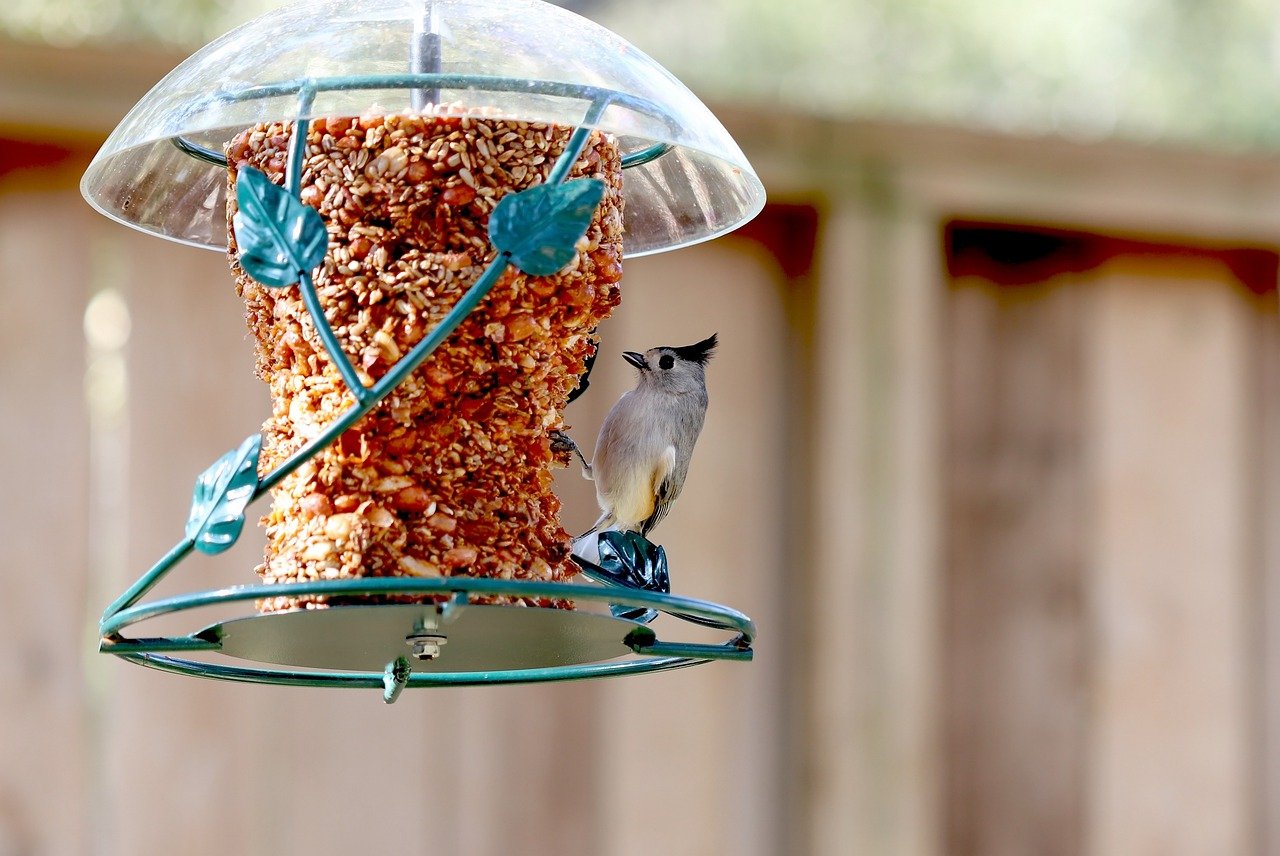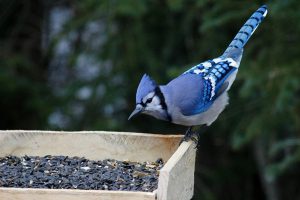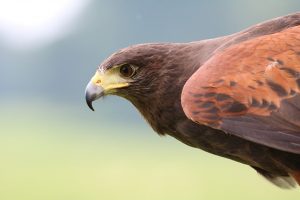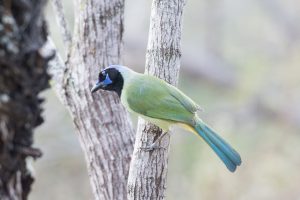Constantly refilling your backyard bird feeders gets expensive.
If birds are plowing through your seed faster than you can keep up, here’s how to make your bird food last longer and save some money.
To make backyard bird food last longer:
- Use seed cylinders instead of loose seed.
- Keep squirrels & raccoons off with hot pepper food or baffles.
- Keep doves off with small tube feeders.
- Discourage House Sparrows & Starlings with hard-shelled seeds.
- Use alternative foods like nyjer for finches, & hummingbird nectar.
- Utilize water features, like a bird bath or water pan.
- Plant native shrubs & grasses as a natural source of seeds & insects.
- Decrease number of tray and open style feeders.
Seed Cylinders
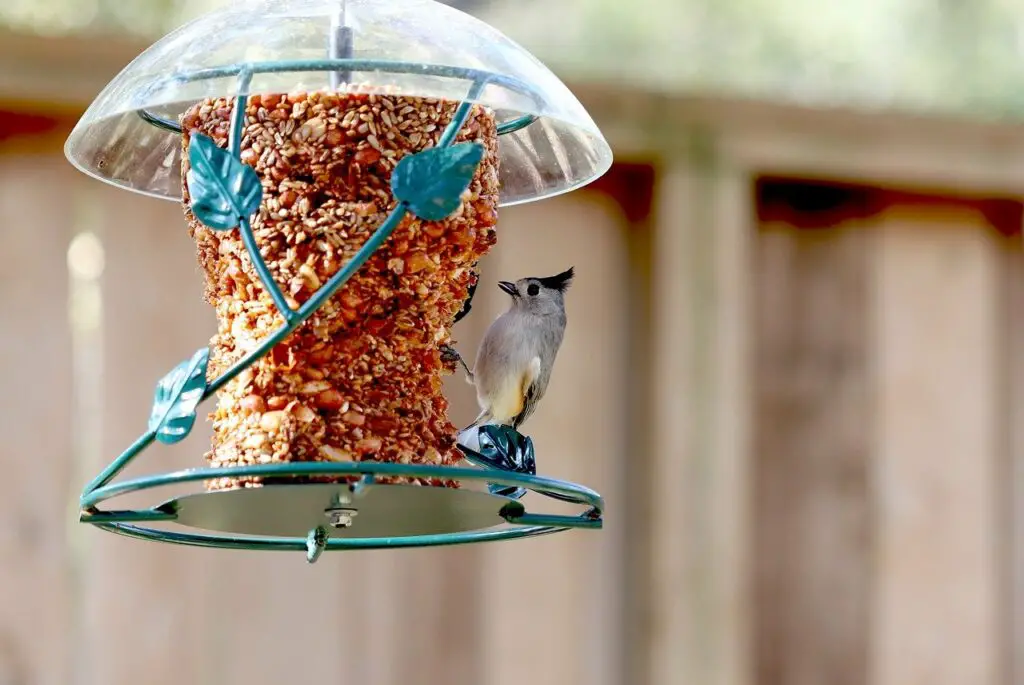
Seed cylinders are possibly the longest lasting bird food there is. They’re low maintenance, and most backyard songbirds love them.
A single 1.75 lb bird seed cylinder can last around 3 weeks, while a large 4.5 lbs cylinder usually lasts well over a month. For comparison, a 5 lb bag of high quality seed will last most people about a week. Two weeks tops.
Cylinders are convenient because they’re basically zero maintenance. You don’t have to keep refilling them every few days like with loose seed. It’s a “set it and forget it” type of food.
Since birds have to peck at the seeds to pull them off, they’re not able to consume the food quickly. The process isn’t so difficult that it discourages the birds, but just difficult enough that they’ll only consume a small percentage of the cylinder each day.
Cylinders often contain sunflower seeds and peanuts packed together, with a thin gelatin coating to hold it all together. Other ingredients may include safflower, mealworms, suet pieces, and dried fruit.
Recommended Seed Cylinders to Try:
- Flaming Hot Feast – Too hot for squirrels & raccoons, birds can’t taste the hot pepper. (Amazon link)
- Bugs, Nuts, & Fruit – Good for Wrens, Jays, and Woodpeckers. (Amazon link)
Note: If you have squirrels be sure to get a cylinder with hot pepper, or use a squirrel baffle.
How to Use Seed Cylinders
Seed cylinders require a specific type of feeder. The feeders have a narrow pole in the middle that slides up and through the hollow center of a seed cylinder.
Here’s a good option with both a tray bottom and a roof to keep off light rain. (Amazon link)
Feeders with tray bottoms are better since they catch the crumbs that break off, but they all work the same so just get one that looks nice to you.
Just be sure to keep the squirrels off!
Keep Squirrels & Raccoons Off Your Bird Feeders
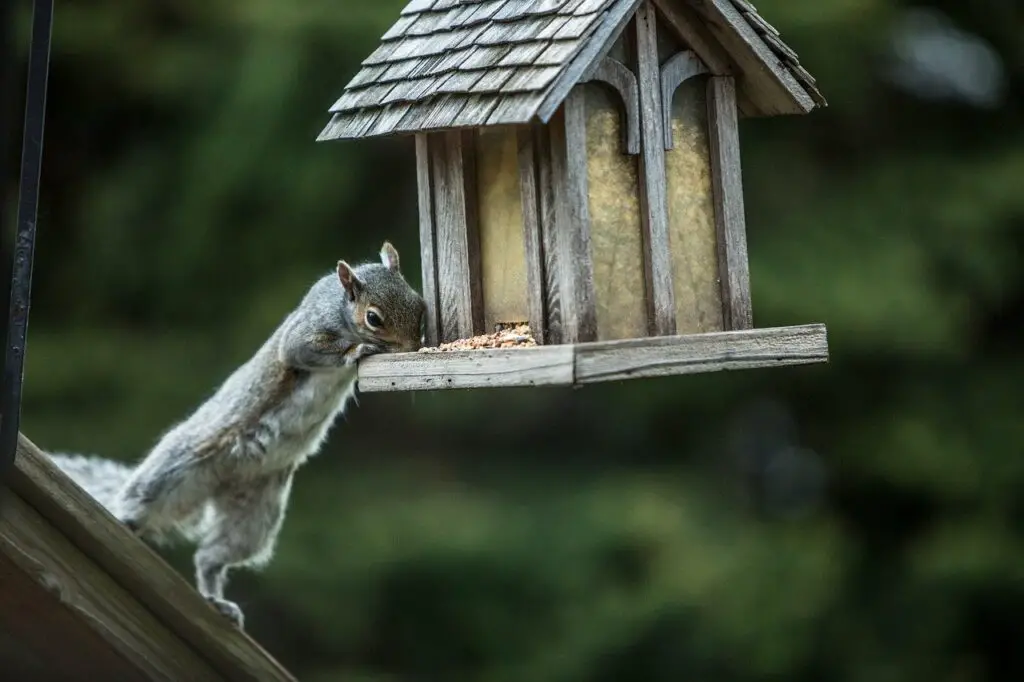
Squirrels are cute, but not when they’re eating your seed and costing you money.
Raccoons can be outright destructive due to their strength and hand dexterity. They’ve even been known to unhook bird feeders and drag them off into the bushes!
To keep squirrels off your bird feeders, the ideal solution is to place a squirrel baffle on the pole that your feeders hang from, or use a flat hanging baffle if feeders hang from a tree. Hot pepper bird seed is also useful, with a success rate around 90%.
To keep raccoons off your bird feeders, place an extra large conical or cylindrical baffle on the feeder pole, or use a large flat hanging baffle for feeders that hang from a tree. Hot pepper bird seed has also been shown to be highly effective against raccoons.
Baffles – Squirrel and Raccoon
I use two baffles in my yard (one pole baffle and one hanging baffle) and I love them because they work. It’s a one time purchase to solve the problem for years to come, so it more than pays for itself.
Squirrels can leap up to 10 feet sideways, so place your baffle set-up away from tree trunks and fences. Otherwise they may simply jump over your baffle.
Hanging Baffles
A hanging baffle is a good option if you have a large tree in your yard. You just need a chain or some rope to hang it from.
This is the exact one I use in my yard (Amazon link). After 5 months of use it has yet to fail me.
It’s heavy duty, and large enough in diameter to keep off both squirrels and raccoons, which are more difficult to deter.
Pole Baffles for Squirrels
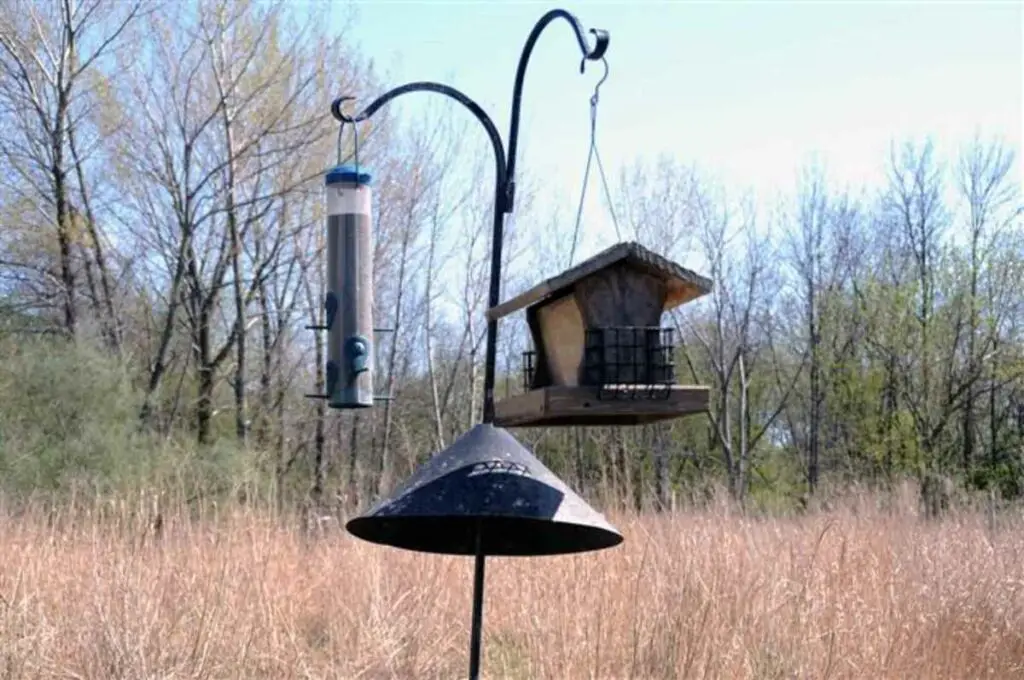
If you have feeders hanging from a pole then you’ll need a pole baffle.
When installing a pole baffle the top should be 4 to 5 feet above the ground to prevent squirrels from jumping over it.
They come in two shapes: wide conical, and narrow cylindrical.
Cylindrical
The narrow baffle style looks more sleek and low profile, but doesn’t have a side slit for installation.
If your pole doesn’t have a least one end that’s perfectly straight (so most standard shephard’s hooks), then do NOT get this style. You won’t be able to get it on the pole. Otherwise, it’s a great option.
Erva is an American company that makes quality cylindrical baffles. I’ve purchased them myself and have been happy with their performance. (Amazon link)
Conical
Conical style is the more classic shape that most people recognize. They come with an open slit down the side, you can slide it directly onto the pole and wrap it around.
Here’s one that will fit shephard’s hooks, along with larger diameter poles. (Amazon link)
Hot Pepper Food
Hot pepper food is a simple solution that works about 80% – 90% of the time against squirrels, and 95% of the time against raccoons.
Mammals have certain taste receptors which are very sensitive to hot and spicy flavors. Birds on the other hand, can’t taste it. Their tongues literally don’t have the taste receptors to detect hot/spicy.
Is it harmful to birds?
Well, bird feeding enthusiasts have observed birds that repeatedly eat hot pepper food for decades now and have never noticed observable harm or discomfort.
In terms of what to buy, options include hot pepper loose seed, hot pepper seed cylinders, and hot pepper suet.
Another option is a hot sauce specifically made for bird seed (Amazon link). Just pour your seed into a large bowl, drizzle the hot sauce, and mix well. Just don’t get it in your eyes!
Squirrel-proof Feeders
If you don’t want to mess with baffles or hot pepper seed, a good squirrel-proof feeder will protect your seed (and therefore your money).
The Squirrel Buster Plus is the king of squirrel-proof feeders. It’s big. It’s expensive. And it does the job better than anything else on the market.
I’ve spoken to at least 10 different people who own these, and they always rave about them. Some individuals actually owned multiple.
I also repaired one once, and the owner said the feeder lasted him almost 20 years before it broke.
Don’t break the bank for a bird feeder, but if the squirrels are just driving you absolutely nuts and nothing seems to work, the Squirrel Buster Plus may finally give you some peace. (Amazon link)
A cheaper option is the Squirrel Buster Legacy. It’s not weight sensitive or adjustable, and is smaller, but it’s half the price and gets the job done. (Amazon link)
Keep Doves Away
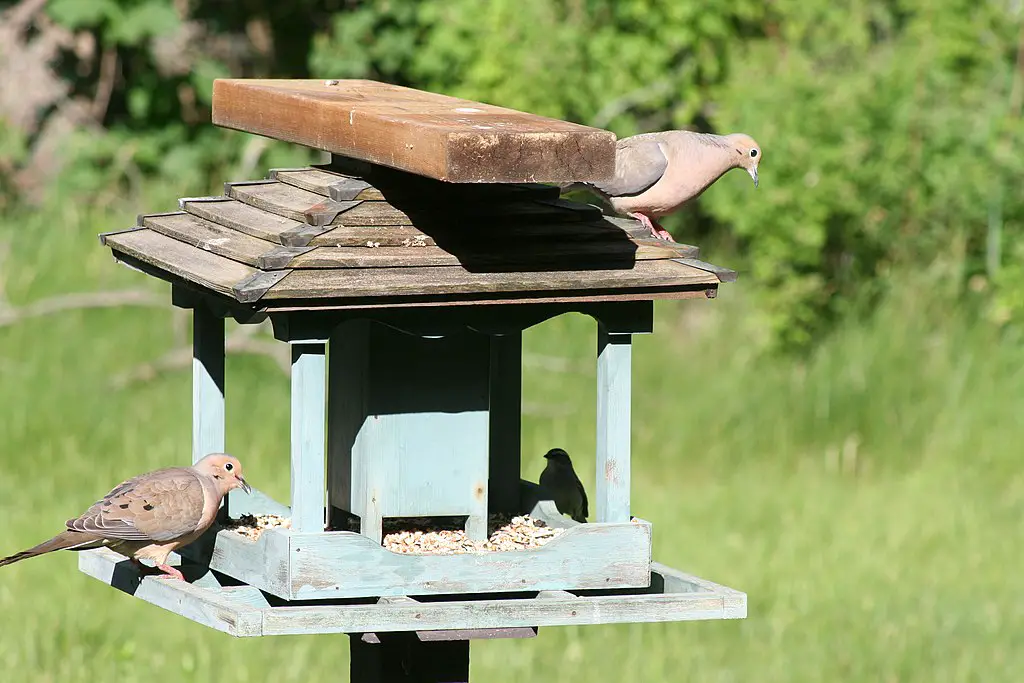
If you’re tired of watching doves park themselves right on top of your food and gorge themselves until they can barely fly, here’s how to stop them.
How to Stop Doves from Eating your Bird Seed
- Use small tube feeders with short perches
- Use seed cylinders, which lack easy perching spots
- Avoid open tray or dish type feeders
- Minimize seed on the ground
Tube Feeders
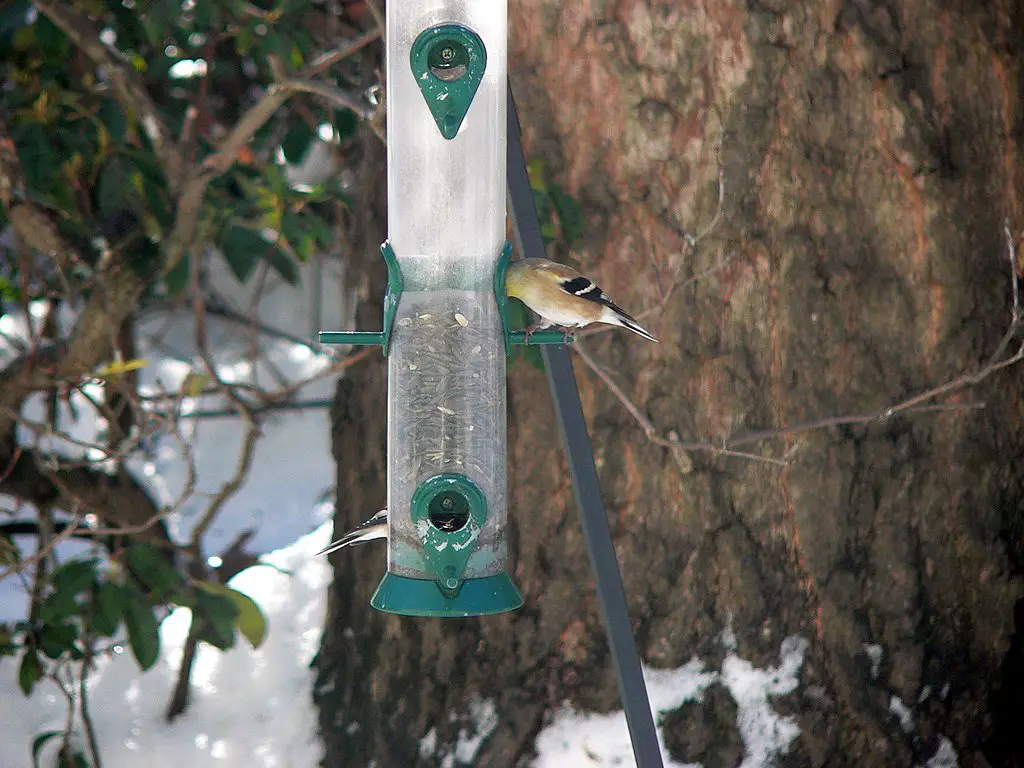
Possibly the most effective anti-dove feeder is simply a feeder that’s too small for them.
Doves are large birds compared to a chickadee, titmouse, or even a cardinal. They need plenty of perching space to remain stable while feeding. So, don’t give them that space.
I use this exact feeder (Amazon link) in my yard and have had wonderful success in defeating the 10+ doves at my feeders. The perching bars are just too short for doves to balance on for any length of time.
Seed Cylinders
Cylinders follow the same idea as a small feeder in that the doves lack an easy perching spot to feed from.
This depends on the exact type and shape of your cylinder feeder, but most feeders will only allow one dove at a time, if that. Most people are fine with a single dove at their feeder.
Click here to jump to the seed cylinder section near the top of this article for specific recommendations.
Avoid Tray Feeders
Doves love flat open surfaces to feed on. A large open tray full of seed is their dream come true.
While it’s possible to buy anti-dove cages for some trays, they’re not 100% effective. Sometime the doves get trapped inside.
The simple solution is to swap it out for a different type of feeder. Preferably a vertical style feeder, like a tube feeder.
Discourage House Sparrows & Starlings
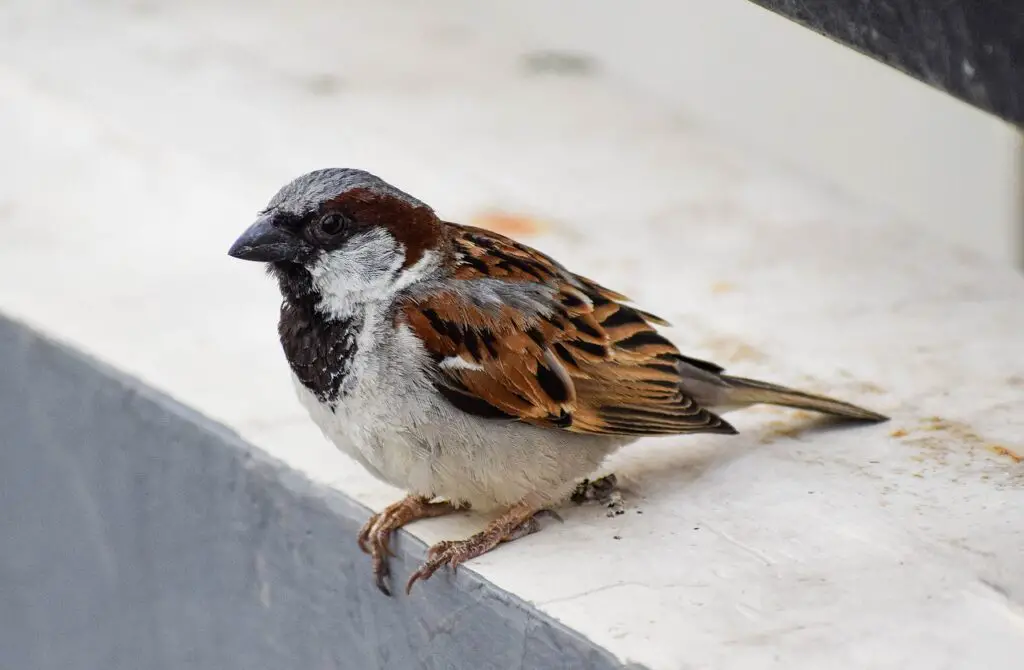
House Sparrows and Startling with both swarm feeders in groups, and both will aggressively peck away other songbirds. Luckily, reducing their numbers usually isn’t too difficult. Especially with Starlings.
How to Stop Starlings from Eating Your Bird Seed:
- Use hard-shelled seeds like safflower, stripped sunflower, or whole peanuts
- Use single perch feeders like tube feeders to prevent swarming
European Starlings don’t have beaks designed for breaking tough seed shells. Safflower & Striped Sunflower are known for their tough shells, harder than blackoil sunflower.
Starlings get frustrated and eventually leave when they have to wait their turn to feed, so eliminate open feeders like trays. Instead use smaller tube feeders (Amazon link) that force birds to feed only a few at a time.
If you use suet, be sure to place it where starlings can’t easily perch to feed on it. If nothing else, hanging a suet cage from a small chain or rope is effective. Avoid with squirrels by using hot pepper suet.
How to Stop House Sparrows from Eating Your Bird Seed
- Force them to feed one or two at a time with small tube feeders or seed cylinders
- Avoid open style feeders like trays or bowls
- Reduce seed on the ground
- Offer seed types they don’t like, such as safflower or nyjer seed
While House Sparrows may be impossible to completely get rid of, it’s always possible to greatly reduce their numbers. Do this by forcing them to feed only a few birds at a time, and to feed more slowly.
A tube feeder with only 2 or 4 feeding ports (Amazon link) is great because while a couple sparrows feed, the other ten are waiting impatiently nearby not eating a thing. Eventually the group becomes frustrated and moves on.
Seed cylinders follow the same strategy. Only two or three sparrows can feed at a time, which the group doesn’t appreciate.
Utilize Alternative Foods
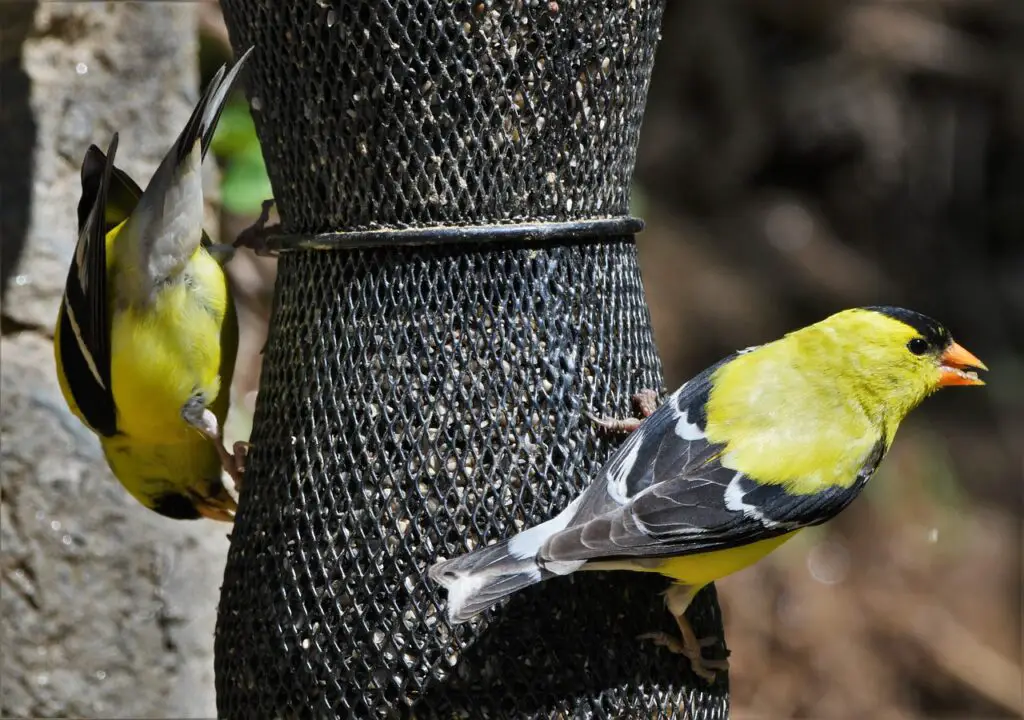
Diversifying food at your feeders with lower cost items is another way to make bird food last longer and save money.
One option is using nyjer seed, which is usually cheaper than blackoil sunflower or shelled peanuts.
Finches love nyjer seed. Using it will attract American Goldfinch, Pine Siskin, and possibly Lesser Goldfinch depending on where you live.
Nuisance birds like House Sparrows, Starlings, and doves show little to no interest in nyjer seed, so it usually lasts longer than typical sunflower based seed mixes.
Just be sure to have the proper feeder for nyjer. The metal mesh finch feeders tend to work best.
Another cheap food is hummingbird nectar. This will attract more birds (hummingbirds) to your yard, without using additional seed to do it.
There’s two main tricks to a successful hummingbird feeder: Keep it clean and keep the bees away.
Hummingbird nectar must be changed out at least every other day, or daily if temperatures reach above 85 degrees.
Sugar water encourages explosive bacteria growth, especially when it sits in the sun. If you can’t refresh your nectar regularly, then don’t offer it at all. You’ll be doing more harm than good.
To keep bees away simply avoid the color yellow. Red is the only color needed to attract hummingbirds.
Attract Birds with Water
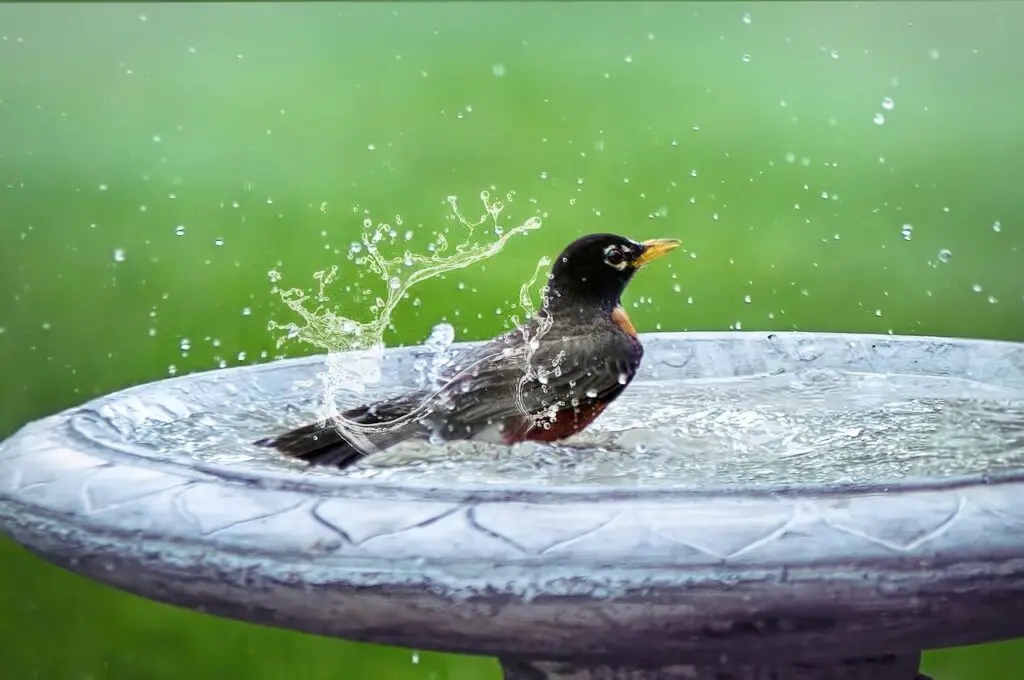
Adding a water source at your feeders is great because water is so cheap!
A decent bird bath or water pan will actually attract more species of birds than feeders will, simply because everything drinks water.
You may begin to see Northern Mockingbirds, migrating warblers and catbirds in spring and fall, and native sparrows like White-crowned, White-throated, and Lincoln’s Sparrow.
If you don’t have the budget for a big fancy stone bird bath, a smaller hanging bath (Amazon link) or deck mounted bath (Amazon link) is just as effective .
Water must be changed out regularly so it doesn’t become a breeding ground for bacteria and bird diseases. Change it out every other day in cool weather, and daily in warm weather.
Remember that birds prefer water at least several feet up off the ground because it makes them feel safer.
Native Shrubs & Grasses
Planting native shrubs and native grasses is a great way to attract more birds without putting out more seed.
Shrubs provide an attractive shelter, and maybe edible berries, while grass seeds are just as good as bird seed.
Shrubs also can attract caterpillars, a main food source for breeding birds and migrating birds in the spring. Lantana, Frostweed, Persimmon, Beautyberry, and Mulberry are potential options.
Here’s a great resource for native south and southwest plants perfect for birds and wildlife (Travis Audubon link).
Decrease the Number of Feeders – Especially Tray Feeders
This is basically a last resort, but is guaranteed to be effective.
Start with removing open feeders that spread seed over a wide area, like tray feeders. Too many birds can sit in these and gorge themselves all day long, plowing through seed at astonishing rates.
If that’s not enough, next remove feeders that can hold more than 4 birds at a time. You can replace them with tube feeders or seed cylinders, which only feed a few birds at a time, and force them to eat more slowly.
These tips will help your food last significantly longer, while still keeping the birds happy and coming back to your yard daily.

